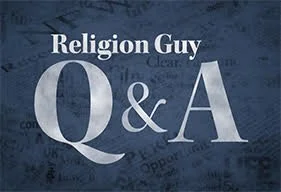THE QUESTION:
What’s signified by shepherds and wise men worshipping the newborn Jesus?
THE RELIGION GUY’S ANSWER:
The world’s most-read and most-recited narratives are quite likely the two independent and contrasting accounts of Jesus’ birth that begin the biblical Gospels of Matthew and Luke.
A particularly striking difference is that Matthew has a Jewish flavor yet features Gentile “wise men from the East” of high status and Luke, aimed at a Gentile audience, tells us of humble Jewish shepherds. Intriguingly, neither Gospel knows of the other’s visitors who came to worship the baby of Bethlehem.
Several decades later, the Book of Acts records, the earliest Christians were busily converting not only Jews but a visiting Ethiopian official, hated Samaritans and Roman occupation soldiers, and then multicultural Gentiles across the Mediterranean region.
In the Christian understanding, the birth in Bethlehem fulfilled God’s promise in calling Abraham that “by you all the families of the earth will bless themselves” (Genesis 12:3) and the revelation to the prophet Isaiah that Israel would be “a light to the nations” (42:6, 49:6, 60:3).
By the early 50s A.D., the greatest of the early missionaries to Gentiles, St. Paul, would cite the universal call of Abraham as he taught believers that “there is neither Jew nor Greek, there is neither slave nor free, there is neither male nor female; for you are all one in Christ Jesus. And if you are Christ’s then you are Abraham’s offspring, heirs according to promise” (Galatians 3:6-9 and 28-29).
Which brings us to one of the best sermons The Religion Guy heard during 2022, at a Reformed Church in America congregation he had just joined, and delivered by its first female pastor. She examined the final verses of Paul’s letter to the Colossians that run through his typical greetings to colleagues, the sort of passage readers typically pass over with little thought.
The sermon proclaimed that the lineup of 10 named Christians portrays the remarkable nature of Christ’s church. As it happens, this precisely carried out Paul’s vision in Galatians 3.
“Slave nor free?” The name that most leaps out is Onesimus, who was not only a slave but a runaway. His situation is the topic of the scriptural letter to Philemon. There Paul asks Onesimus’s owner not only to receive the returning runaway as a Christian brother but clearly though subtly suggests he should escape punishment and no longer be a slave.
“Jew nor Greek?” The honorees also bridge troublesome racial gaps. Paul specifies that Mark and Jesus Justus are “men of the circumcision,” that is, Jews who follow Christ, in close fellowship with the other eight who are Gentiles. Presumably all 10 were good patriotic citizens of their towns and regions, but the 1st Century knew no Christian nationalism. (What about the 21st Century?)
“Male nor female?” It’s notable that Paul lifts up a woman alongside the nine men. Nympha is described as the host of a house church, and since no man is mentioned she presumably led this congregation. (Even conservative scholars reject old claims that the name should be translated as masculine.)
There’s more. Luke is called the “beloved physician,” so he would have had such professional training as existed 2,000 years ago, and he was well-educated otherwise, as seen in the literary and research skill in the Gospel of Luke and Book of Acts attributed to him. It’s entirely possible some among the other nine were illiterate.
CONTINUE READING: “What’s signified by shepherds and wise men worshipping the newborn Jesus?”, by Richard Ostling.
FIRST IMAGE: Typical modern Nativity scene painting, for sale at Kirklands.com


